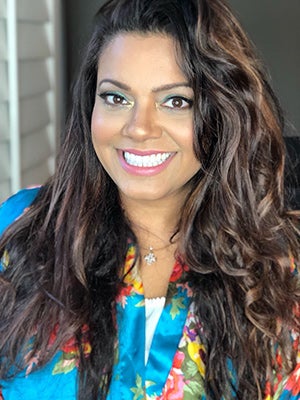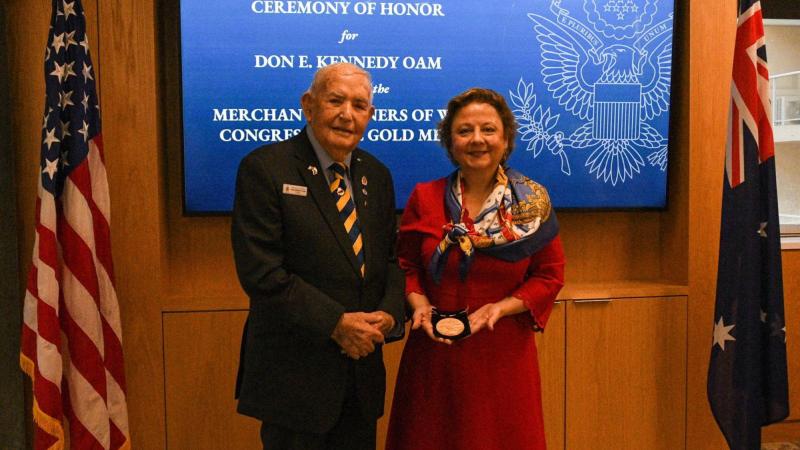For both instructor and students, the University of Toronto’s “Global Hidden Hunger” course holds special meaning because of their own personal experiences.
The course, offered by the Faculty of Arts & Science’s human biology program (HMB), looks at the causes and impact around the world of diets lacking in micronutrients like vitamin A, folate, iodine, zinc, iron and vitamin D.
In contrast to the hunger and malnutrition caused by a lack of macronutrients like protein and carbohydrates – which many associate with the Global South – hidden hunger caused by a lack of micronutrients is found in both the Global South and North. And while it may not make the same types of headlines as famine, hidden hunger still affects half the world’s population.

Leanne De Souza Kenney (photo courtesy of Kenney)
“When my family immigrated to Canada, we had to make some difficult choices about what kinds of food we could eat,” says Leanne De Souza-Kenney, assistant professor, teaching stream, the HMB program. “I remember that it was a big deal when we could put meat on the table and a luxury when we were able to have fresh vegetables.”
The course, originally created by HMB associate professor Alistair Dias, was taught by De Souza-Kenney in the summer of 2021 and again in the fall. U of T Mississauga’s Eve Hammed took the course in the summer and says she realized she herself suffered from micronutrient deficiencies.
“The problem of hidden hunger is not exclusively a socioeconomic or geographical problem,” says Hammed. “It’s more widespread than I realized, but it’s less visible and, as a result, rarely addressed. It’s not part of the conversation we usually have about food security and poverty. That was eye-opening.”
Micronutrient deficiencies occur for a variety of often intersecting reasons including inadequate access to food, either because it’s not physically available or is not affordable. This happens in regions like Canada’s North but so-called “food deserts” also exist in cities like Toronto.
Another factor contributing to hidden hunger is a lack of knowledge. For example, micronutrient deficiencies can also occur because food is not prepared properly or is not combined with other foods in an optimal way.
For example, spinach is a good source of iron but if it’s not prepared properly, that iron remains locked up in the cells of the plant, providing us with no nutrition. Plus, when you consume iron-rich food like a fortified breakfast cereal, the micronutrient is less available to you because you’re combining it with the caffeine in your morning coffee.
In both the summer and fall, the course had a significant community-engagement component involving the Vancouver-based Unique Get Together Society (UGTS). Founded and run by Debra Abraham, the society provides a wide range of services, including nutritional support, as well as resources for Black, Indigenous and other underserved communities and families.
“I’ve never heard from someone with quite the knowledge and life experiences of Debra,” says Matisse Blundell, a member of Woodsworth College who took the course in the summer. “She shared some very sobering personal stories with us which exposed the impact of systemic trauma on Indigenous Canadians. It was a powerful experience.”
Students took the information they gained through the course and their own research about specific micronutrients and shared it with UGTS and members of the society’s community. The students looked at the foods available to the people in the community and provided shopping and menu recommendations for avoiding micronutrient deficiencies.
They also developed projects designed to help UGTS and organizations like it fight hidden hunger.
U of T Mississauga student Pooja Dey and her team proposed a project that harnessed “mobile health” (mHealth) technology to provide health-care support via mobile apps, text messages or voice messages to at risk populations. For example, the technology would help women who – because they are pregnant or who in the past year have given birth – may be iron deficient by providing them with dietary guidance, as well as daily prompts to take their supplements.
“As science students, we see the power of research and knowledge,” says Dey. “But often this knowledge isn’t accessible to the general population – and certainly not to vulnerable groups. Being able to translate this information about iron deficiency and by taking advantage of mHealth interventions, we hope to empower women and support their agency and decision-making.”
With the success of the summer course, De Souza-Kenney expanded the scope in the fall by adding a global community engagement partnership to the existing relationship with UGTS. Supported by U of T Global Classroom funding, that collaboration is with Landmark University and Covenant University in Nigeria – both of which focus on agriculture and food security.
In the fall course, Canadian and Nigerian students developed proposals to fight global hidden hunger and food security.
Trinity College student Alexander Nassar and his team are working on a project to fortify tea with vitamin B12. Their target population are the elderly, a demographic that can suffer from vitamin B deficiency and that consumes large amounts of tea.
“Since we are collaborating with Nigerian universities, we also wanted the idea to be accessible for rural populations in Nigeria,” says Nassar. “Informal medicine vendors travel to those areas to distribute standard pharmaceutical products, and we thought tea could be easily distributed this way. Tea is also inexpensive and is a relatively stable product to carry around.”
The projects aren’t just for marks. They will be evaluated and three will receive funding to make them a reality.
In addition to turning student proposals into projects, De Souza-Kenney is hopeful that the course will have a lasting effect on students.
“I really hope they will be inspired to look at careers where they get to use this information and affect change in meaningful ways,” she says.
“I hope that this gives them some direction in addressing the human right for food and nutrition, and direction in fighting inequities that stem from the color of your skin, low income, the fact you are a new immigrant or are from a single parent family.”








